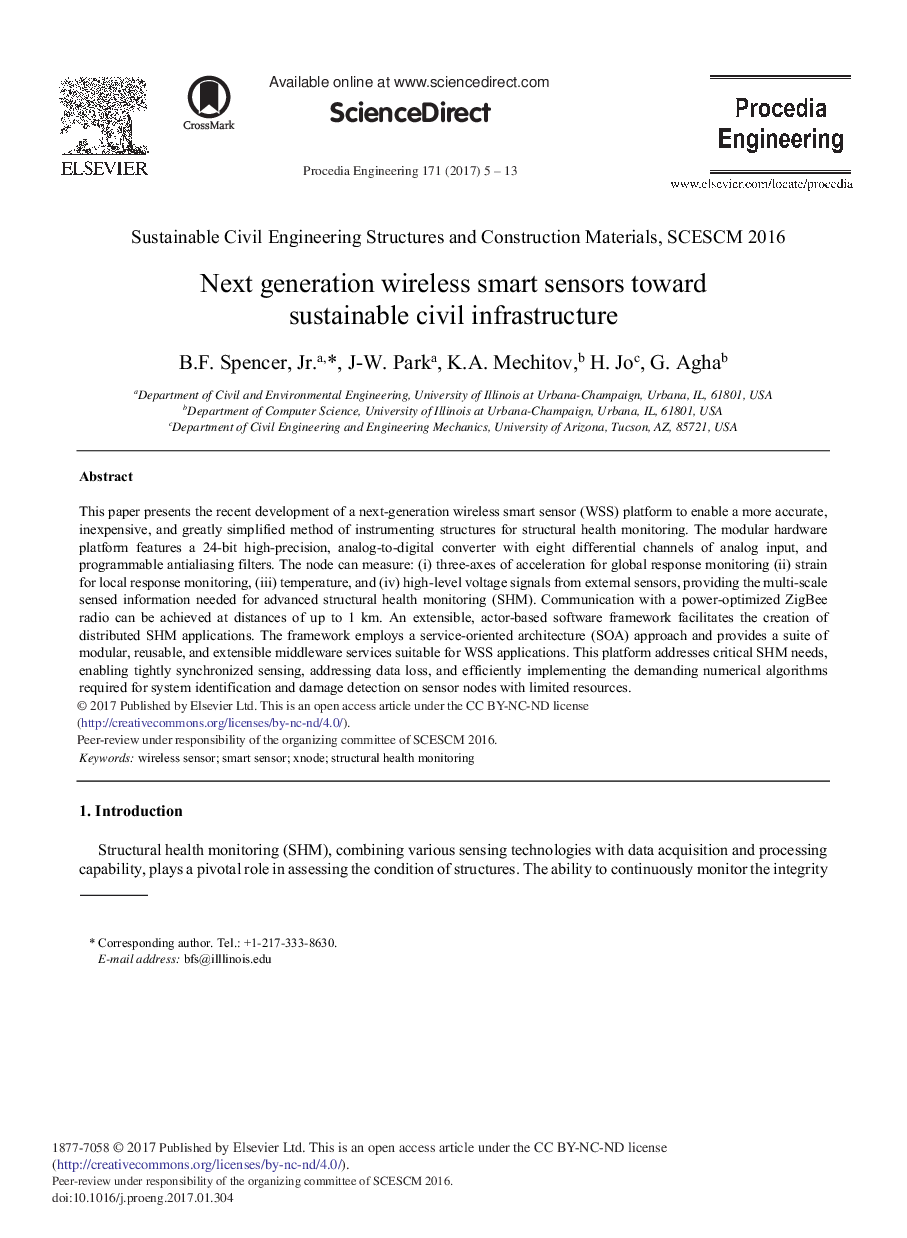| Article ID | Journal | Published Year | Pages | File Type |
|---|---|---|---|---|
| 5028530 | Procedia Engineering | 2017 | 9 Pages |
This paper presents the recent development of a next-generation wireless smart sensor (WSS) platform to enable a more accurate, inexpensive, and greatly simplified method of instrumenting structures for structural health monitoring. The modular hardware platform features a 24-bit high-precision, analog-to-digital converter with eight differential channels of analog input, and programmable antialiasing filters. The node can measure: (i) three-axes of acceleration for global response monitoring (ii) strain for local response monitoring, (iii) temperature, and (iv) high-level voltage signals from external sensors, providing the multi-scale sensed information needed for advanced structural health monitoring (SHM). Communication with a power-optimized ZigBee radio can be achieved at distances of up to 1Â km. An extensible, actor-based software framework facilitates the creation of distributed SHM applications. The framework employs a service-oriented architecture (SOA) approach and provides a suite of modular, reusable, and extensible middleware services suitable for WSS applications. This platform addresses critical SHM needs, enabling tightly synchronized sensing, addressing data loss, and efficiently implementing the demanding numerical algorithms required for system identification and damage detection on sensor nodes with limited resources.
